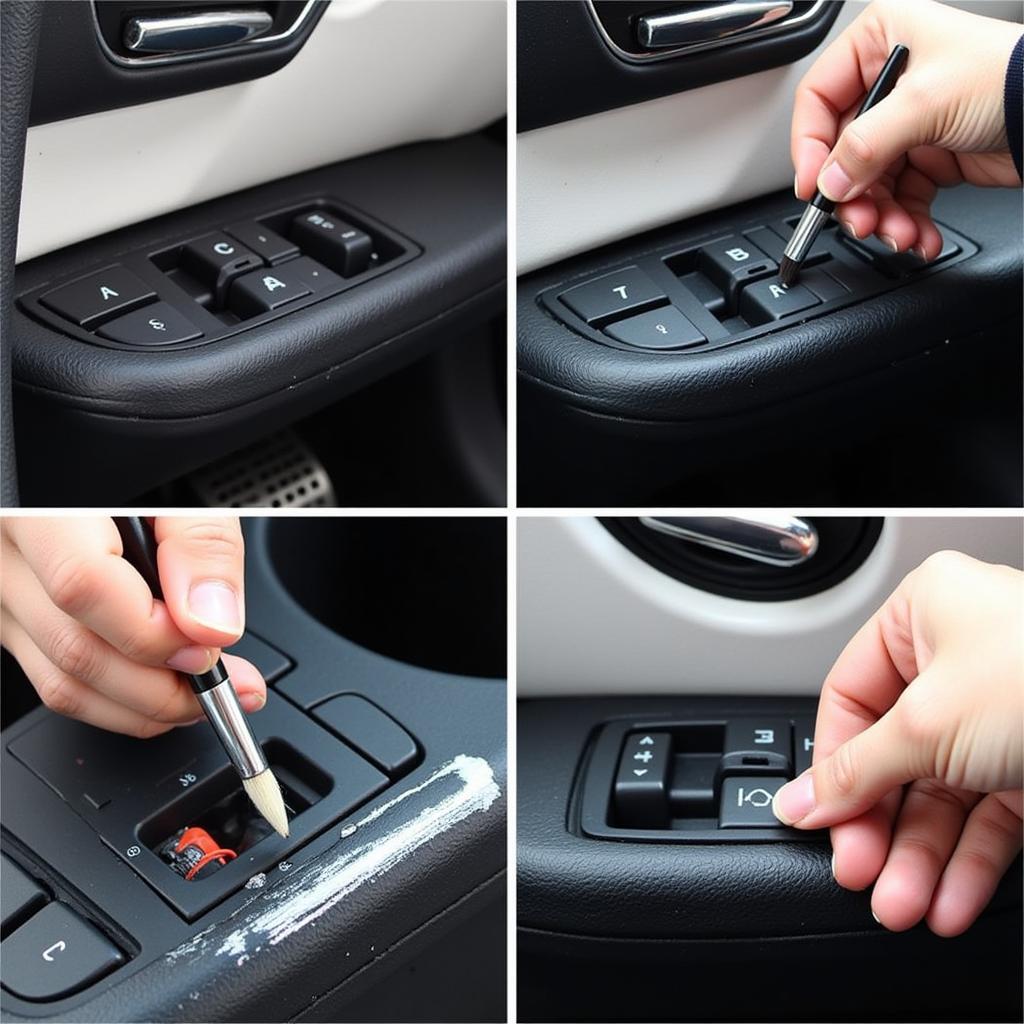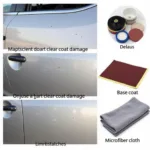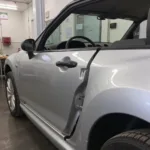Understanding how to repair paint controls in car interiors is essential for maintaining a vehicle’s appearance and value. Whether it’s a minor scratch, a chipped control button, or more extensive damage, knowing the right techniques and materials can save you a trip to the auto shop and keep your car looking its best. This guide will provide a comprehensive overview of various paint repair methods for car interiors, from simple touch-ups to more complex restorations.
Identifying the Damage to Your Car’s Paint Controls
Before diving into the repair process, it’s crucial to assess the extent of the damage. Is it a superficial scratch, a deep gouge, or perhaps faded paint due to sun exposure? Identifying the type of damage will determine the appropriate repair method. A simple scratch might only require touch-up paint, while deeper damage might necessitate sanding and priming before repainting. Examining the damage carefully under good lighting will give you a clearer understanding of the task ahead.
Gathering Your Materials for Car Paint Control Repair
Having the right tools and materials is key to a successful repair. For minor scratches, you’ll need touch-up paint that matches your car’s interior color, a fine-tipped paintbrush or applicator, and some rubbing compound for blending. For more significant damage, gather sandpaper (various grits), primer, paint, clear coat, masking tape, and plastic sheeting. Don’t forget cleaning supplies like isopropyl alcohol and microfiber cloths to prepare the surface.
Step-by-Step Guide to Repairing Scratched Paint Controls
For minor scratches on your car’s paint controls, follow these steps:
- Clean the area: Thoroughly clean the scratched area with isopropyl alcohol and a microfiber cloth to remove dirt, grease, and wax.
- Apply touch-up paint: Carefully apply the touch-up paint to the scratch using a fine-tipped brush or applicator. Apply thin coats to avoid runs and drips.
- Allow to dry: Let the paint dry completely according to the manufacturer’s instructions.
- Blend and polish: Once dry, use rubbing compound and a polishing cloth to blend the repaired area with the surrounding paint.
Repairing Chipped or Deeply Scratched Paint Controls
For chips or deeper scratches, the process is slightly more involved:
- Prepare the area: Sand the damaged area with progressively finer grits of sandpaper to smooth the surface and remove any loose paint.
- Mask surrounding areas: Use masking tape and plastic sheeting to protect the surrounding areas from overspray.
- Apply primer: Apply a thin coat of primer to the sanded area and let it dry.
- Apply paint: Apply several thin coats of paint, allowing each coat to dry before applying the next.
- Apply clear coat (optional): For added protection and shine, apply a few coats of clear coat once the paint is dry.
- Remove masking: Carefully remove the masking tape and plastic sheeting.
 Applying Touch-Up Paint to Car Interior Control
Applying Touch-Up Paint to Car Interior Control
Restoring Faded Paint Controls in Your Car
Restoring faded paint controls often requires repainting the entire control:
- Remove the control (if possible): Removing the control will make the painting process easier and more thorough.
- Prepare the surface: Clean and sand the control to create a smooth surface for the paint to adhere to.
- Apply primer: Apply a thin coat of primer and let it dry.
- Apply paint: Apply several thin coats of paint, allowing each coat to dry thoroughly.
- Apply clear coat: Apply a few coats of clear coat for protection and shine.
- Reinstall the control: Once everything is dry, reinstall the control.
“When repairing paint controls, patience is key,” advises John Miller, Senior Automotive Detailing Specialist at AutoShine Pro. “Taking your time and applying thin coats will result in a much more professional and durable finish.”
Preventing Future Damage to Your Car’s Paint Controls
Prevention is always better than cure. Regular cleaning and protecting your car’s interior with a UV protectant can help prevent fading and minimize the risk of scratches. Avoid using harsh chemicals or abrasive cleaners on interior surfaces.
Conclusion
Repairing paint controls in your car is a manageable task that can significantly improve the appearance of your vehicle’s interior. By understanding the different repair methods and following the steps outlined in this guide, you can effectively address various types of paint damage, from minor scratches to more extensive fading. Remember, how to repair paint controls in car interiors effectively involves meticulous preparation and patience for a flawless finish.
FAQ
- What type of paint should I use for car interior controls?
- Where can I find touch-up paint that matches my car’s interior color?
- How long does it take for touch-up paint to dry?
- Can I repair cracked paint controls?
- How can I prevent my car’s paint controls from fading?
- Should I use a clear coat on interior paint repairs?
- What should I do if the paint doesn’t match perfectly?
For more information on car maintenance and repairs, check out our other articles on car detailing and interior cleaning.
Need further assistance? Contact us via WhatsApp: +1(641)206-8880 or Email: [email protected]. Our customer support team is available 24/7.


